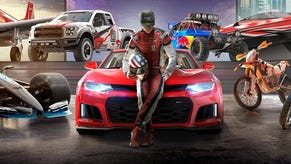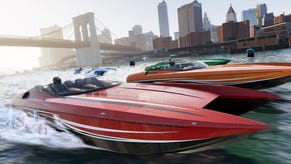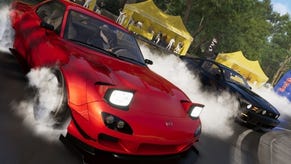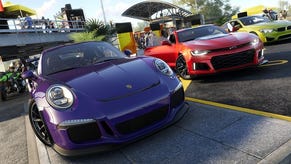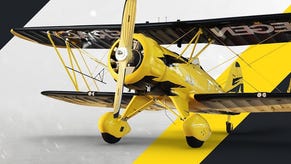The Crew 2 takes Forza Horizon's concept and ramps up the scale
And Xbox One X provides the best console experience.
Given absolute freedom to race anywhere you choose, The Crew 2 is one of the most exciting racing concepts on PS4 and Xbox One consoles. For those who missed the original, it hands you a miniaturised version of the USA, from New York to San Francisco, remixed and remodeled for you to freely explore. Four years on, the canvas is now even bigger for this sequel - and to help with that heightened scale, developer Ivory Tower adds boats and planes to an existing warehouse of supercars, giving you more ways to get from state to state. The sense of scale is often staggering - a supersized version of Forza Horizon, if you will - and the idea is realised surprisingly well on all consoles.
Of course, you can bypass all of the game's open-world roaming, and just jump straight to set racing events on a 2D map. It's far more practical, but ultimately it's hard not to experiment with The Crew 2's engine in a more free-form manner, just to see how far it goes. Certainly in my experience escalates to a point I didn't expect going in.
First, there's the breadth of the terrain. Taken at a macro level, the breadth of landmass is a marvel - it's just as much experimenting with this side of the game as the actual racing. The engine gives you all the tools you need to migrate quickly: take a vehicle anywhere in the world, freeze the action, and then zoom out and out until you see a full top-down view. It's like an in-game Google Earth - even letting you walk around to admire your collection of boats, planes and cars. The orbital camera mechanic has similarities to Driver San Francisco - itself an unusual last-gen racer, which let you detach from your vehicle. It's curious to note this was developed by Ubisoft Reflections, who also had a hand on the original The Crew, and you have to wonder if some ideas were carried over between the two projects.
Either way it's very impressive. Just as surprising is how the micro-level detail holds up, driving through a famous city like New York. You get a condensed, 'greatest hits' version here - inevitable given the magnitude of the city - but there's a lot of care put into the layout even if it is one part of a bigger piece. Race routes are more interesting as a result of the intensified focus, and what would otherwise be an empty sprawl is, at least, lightly fleshed out with pedestrians and light traffic. Yes - stop the car, look closer, and it can start to feel barren and inactive - but in the context of the game's overarching scale it's still an impressive feat.
It's far from lifeless then, and it goes further. Engine features like a rolling day-night cycle and weather mix in seamlessly, adding rain and snow - each playing against the game's physically-based lighting. All of which means, at night, the game has a beautiful stretch of lamplights lining highways, and at day, you can catch screen-space effects like raindrops hitting the camera view. These ideas factor into the other heavyweights of the racing scene - Forza Horizon being an obvious comparison point. But here it just adds variety onto an already varied game, and forges some incidentally beautiful moments.
Rounding that off is an extensive use of physics modeling. Bizarrely, trees don't benefit from accurate simulation - where collision forces you to an abrupt standstill - but just about everything else on the road flies on impact. It's not unusual to see scenes of havoc unfold if you're behind the pack in a race, and choose to take sharp shortcuts to make up ground. Rocketing through the streets has you clashing with roadworks, and I took some devilish delight in flying low in a biplane to create a scene of carnage. There's an element of Grand Theft Auto's mischief to it all, especially once you introduce more ridiculous vehicles to the big city.
Ambitious as it is, there are limits. Ivory Tower's resources are spread thin while outside the major cities - leaving you a dull, straight road, flanked by what's likely to be procedurally generated detail. It's more of a novelty to travel highways, but it suspends the illusion that everything is part of a contiguous landmass. Of course you can travel as the crow flies in aircraft, or take to rivers in a boat - but all told, it's just easier to warp to a location using the menus. The fact it's possible to travel manually - that there's an option at all - is a plus. It adds a context of freedom, even if you don't actually end up using it.
If the appeal of The Crew 2 is to render a massive, open playing field, the point of resolution plays a surprisingly big part in the experience. The higher the number the better, and for Xbox One X that native resolution is 3200x1800. Admittedly even at 1800p, it's a touch soft, and the use of a temporal anti-aliasing adds obvious banding artefacts on edges. TAA is used on all formats though, and so the problem follows for PS4 Pro, and the base machines.
PS4 Pro takes the next step down in resolution, to around 2816x1584. Counting this one has proven tricky, thanks to the game's per-object motion blur and TAA - but it's immediately obvious PS4 Pro takes an image quality hit next to Xbox One X. It's the first version I played, and definitely, on a 4K TV, the window to the game world suffers from more aliasing. It's still a big leap over the base PS4, which runs at around 1728x972, seemingly cut down from the first game. At 972p, you get 90 per cent on each axis of a 1080p output, and yes - that means more muddiness towards the distance. That's still a step up over a base Xbox One, delivering the lowest resolution at 1600x900.
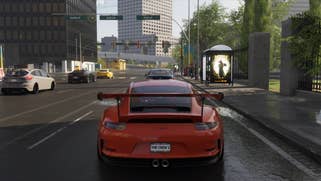
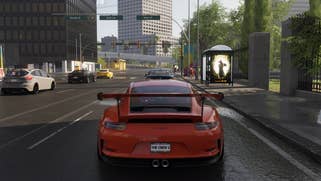

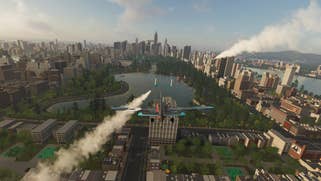
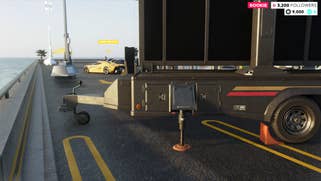


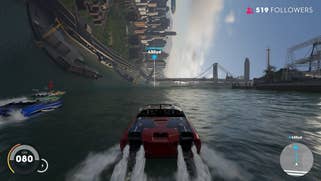
And it does stack up. The Crew 2 invites you to look far into the horizon, and Xbox One X gives you the clearest window to it. The other major factor here is draw distance, where there's a logical scale to how far each console's settings are pushed out - going from X, to PS4 Pro, a regular PS4, and then a standard Xbox One. The gradients in-between are small. The range at which shadows and geometry are rendered shows up especially while flying, and you're bound to catch more pop-in on a base Xbox One. In comparison, the jump from the enhanced X version to the standard machine is stark - while the two PlayStation 4 machines sit in-between these settings.
All consoles benefit from the improved vegetation system - which is equally dense on each machine - and texture quality is identical between each format too. The shadow system is a sore point. All consoles get atmospheric clouding, and are beholden to the time of day, but the quality is ultimately quite low, even on an Xbox One X. Expect to see lots of pixellation on the floor in exhibitions, especially so on the base systems. With that being said, in the blur of a high-speed race, it rarely stands out.
All consoles have to compromise on effects as well - like smoke trailing from planes. Surprisingly, even the all-powerful Xbox One X runs these at around half the game's overall resolution, though it looks worse overall on the other consoles. Again, it just adds up to give The Crew 2 a less than stellar presentation - sometimes blurry, and at times with a flash of aliasing on edges. It's also hard to overlook the screen-space reflection technique used across the game's lakes and rivers - a method that factors in the camera's viewpoint to work out what should be mirrored on the water. Too often you'll see parts of the foreground image get thrown into the mix - which can look a little odd.
Whether it's image quality, draw distance or shadows, it's clear that cuts are made to create such a wide open space. The balance is effective though, taken from a distance. The Crew 2 is a victim of its ambition; the main issue being that it gives you total freedom to fly anywhere or look up-close, which means you can see the stitching at the seams. When it all comes together, it looks gorgeous, but on the ground, I can't help but wonder if the settings could have been more adaptable. For example, on a base PS4, elevating shadow quality while on-foot in a vehicle exhibition would remove a visible rough edge, even if it is dialled back down again for the actual racing.
A quick word on frame-rate; the console versions here run at 30fps, with an adaptive v-sync in place. Playing the game's opening missions on all four machines, it's only been the standard Xbox One to flag any real issues. The adaptive v-sync kicks in noticeably, letting the engine render incomplete frames if they exceed a 33ms render budget. But even with that safeguard, it's dropping frames to almost the mid-20s. It's unfortunate, but improved on a base PS4, which suffers fewer drops, though still with some tearing. Expect a much smoother, tearing-free ride on the Xbox One X and PS4 Pro meanwhile - and overall, The Crew 2's ambition feels much better suited to these enhanced machines.
In essence, Ivory Tower's sequel takes what we had in the original game, and improves it in almost every way. However, resolutions are lower on base systems, while sadly frame-rates can struggle on Xbox One - but the trade-off is there in the overall engine improvements. It's a bigger world, with more vegetation and atmospheric effects, and more ways to interact and explore it. The net result feels substantial, and while the focus veers more towards The Crew 2's wider breadth of detail, there's plenty to admire up close. Needless to say, the console experience is best on Xbox One X - with quality tapering down to PS4 Pro, PS4 and a regular Xbox One. But how much these consoles share - and the scope of the world - is a tribute to the game design itself and the technology powering it.





